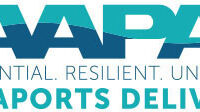Taking a Proactive Stance in Protecting the Environment
By Tom Gresham

When it comes to sustainability efforts, ports often find themselves in the spotlight due to their intimate relationship to the environment and their local communities. As Jonathan Daniels, CEO at Port Everglades, put it, “All eyes are on us on this.” Unsurprisingly, many ports view doing only what is required of them as an insufficient approach to the environmental issues of the day. From improving the habitats of turtles, whales, migratory birds, fish and other creatures to cutting harmful emissions, ports instead are taking a more ambitious, proactive attitude to sustainability.
Jason Jordan, Port of Tacoma’s environmental programs director, said environmental stewardship “has become less of an afterthought and more of a forethought” for ports.
“There’s an expectation that we’re leaders when it comes to being a good steward for the environment,” Jordan said. “Ports are uniquely qualified for that role.”
Wildlife Habitats
Proactive efforts in support of wildlife take on many forms for ports. Habitat enhancement and creation is among the ways some ports mitigate their impact on wildlife. For instance, the Port of Tacoma has developed a large-scale habitat mitigation bank, allowing for the use of mitigation credits for development projects for both the port and others. In addition, the port has built a mitigation fish credit bank.
Migratory birds are among the creatures that can be most hampered by port activities. Port Everglades strives to support least terns, birds that visit the port annually. Through the use of decoy birds, the port steers the birds to nest in controlled areas of the port, rather than construction or operation zones, that are better for the birds’ health.
The Port of Vancouver USA has seen marked progress in its work with purple martins, a bird that has been in decline and uses the Pacific Flyway migration route. The port and its partners installed special gourd houses for the birds at the port’s mitigation bank, 155 acres of restored wetlands.
The port planted vegetation to provide cover and food for a nesting habitat for a variety of birds at the mitigation bank, along with the gourd houses. Consequently, the site has seen dozens of successful purple martin hatches in recent years and “we’re seeing the birds come back every year,” said Matt Harding, environmental project manager for the port.



